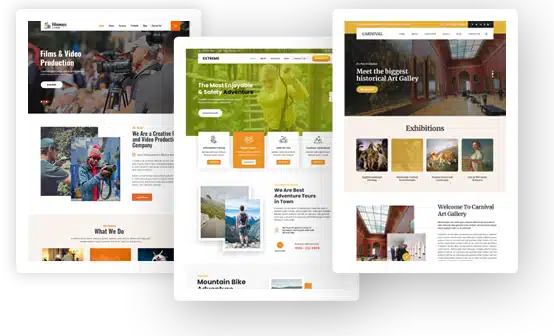Top Tips for Creating a Mobile-Friendly Website

Nowadays, more people use their phones to browse the internet than ever before. In fact, over 60% of global web traffic comes from mobile devices. If your website isn’t mobile-friendly, you could be losing visitors and potential customers. Moreover, a website that doesn’t work well on mobile devices can lead to frustrated users and higher bounce rates.
However, the good news is you can solve this problem with a few simple adjustments. By making your website mobile-friendly, you can provide a better experience for your users.
In this blog post, you will learn the top tips for creating a mobile-friendly website. These tips will help you improve user experience, keep visitors on your site longer, and boost your search engine rankings.
So, let’s get in!
Be Responsive
The first tip is to make your website as responsive as you can. Responsive web designing means creating websites that work well on all devices, like phones, tablets, and computers. This is important because it helps users have a smooth experience, no matter their device.
It also boosts your SEO, as search engines prefer mobile-friendly sites. For example, websites like Starbucks and Airbnb use responsive web design. Their pages adjust automatically to fit any screen size, making them easy to use on both large and small screens. This keeps users happy and helps these sites rank higher in search results.
Optimising Loading Speed
Fast loading time is an important factor when opening a website on mobile devices because users expect quick access to information. Slow sites can frustrate users and cause them to leave.
To optimise speed, you can use tools like image compression and minification. Image compression reduces file sizes without losing quality, and minification removes unnecessary code. This change will lead to better user experiences and increased site traffic. Moreover, optimising loading speed ensures users stay engaged and satisfied.
Mobile-First Approach
A mobile-first design strategy means starting with the mobile version of your website before creating the desktop version. This approach ensures that your site works well on mobile devices. The benefits include better user experience and improved SEO, as search engines favour mobile-friendly sites.
However, to implement a mobile-first approach, first design your website for mobile screens. Focus on simple navigation and fast loading times. Then, gradually add more features for larger screens. This way, you ensure the most important elements work perfectly on mobile, keeping users happy and improving your site’s search engine ranking.
Optimising for Local Search and Voice Search
Local and voice search greatly impact mobile SEO. When people use their phones, they often search for nearby businesses or use voice commands. To optimise for this, add local keywords to your site and create a Google My Business profile.
Moreover, make sure your site loads quickly and has clear information. For example, Domino’s Pizza optimised for local and voice search by adding local keywords and improving site speed. As a result, they saw more traffic and higher search rankings, helping customers easily find nearby stores through voice and local searches.
Simple Navigation and Intuitive UX
Easy navigation on mobile screens is very important to make your website mobile-friendly. Users need to find information quickly without getting frustrated. A good example of intuitive mobile UX design is a clean menu with clear icons and labels. Another example is using a sticky navigation bar that stays at the top of the screen.
Moreover, to conduct usability testing for mobile sites, ask a few users to complete specific tasks on your site. Observe where they struggle and make necessary changes. However, simple navigation and intuitive UX improve user satisfaction and keep visitors on your site longer.
Implementing Accelerated Mobile Pages (AMP)
AMP (Accelerated Mobile Pages) is a technology that helps websites load faster on mobile devices. It improves user experience by significantly reducing page loading times. Industries such as news websites, e-commerce platforms, and blogs benefit most from AMP because they often have content that needs to load quickly for users.
To integrate AMP into existing websites, convert your web pages using AMP HTML. This involves restructuring your code to comply with AMP specifications. Moreover, tools like the AMP Validator can help ensure your pages meet AMP’s requirements.
Ensuring Compatibility Across Devices and Browsers
Websites must work well on various devices and browsers to effectively reach all users. Use testing tools like BrowserStack and responsive design testing to check compatibility. Moreover, the best practices for making your website compatible include designing flexible layouts that adjust to different screen sizes and resolutions, ensuring a smooth experience for all visitors.
Conclusion
In conclusion, creating a mobile-friendly website requires responsive design, fast loading speeds, and technologies like AMP. However, continuous optimization and adaptation to new technologies are essential if you want to stay ahead of your competitors.
A mobile-friendly design enhances user experience, boosts SEO, and strengthens overall digital strategy by maximising reach and engagement. Utilise these practices to ensure your website meets evolving user expectations and achieves sustainable growth in the digital age.

